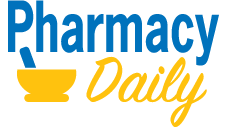AUSVAXSAFETY has published the first Australian safety data on Arexvy respiratory syncytial virus (RSV) vaccination in people aged 60 years and older, reporting low adverse event rates.
The safety surveillance data covered more than 2,000 Arexvy vaccine recipients between 29 Feb 2024, which is when the vaccine became available in Australia through the private market for adults aged 60 years and older, and 27 Sep 2024.
It showed that over 63% of recipients experienced no side effects in the first three days aftervaccination.
The most common adverse events reported were local reactions (30% - mainly pain, swelling and redness at the injection site); fatigue (21%); myalgia (muscle ache - 13%); and headache (12%).
Fewer than 5% of respondents reported missing work, study or routine duties in the three days after vaccination, and the proportion of respondents reported medical attendance to a GP or hospital was low, at 0.4%.
Dr Lucy Deng, AusVaxSafety Clinical Lead, said, "This is the first post-marketing active surveillance data published in Australia for the Arexvy RSV vaccine and is testament to Australia's commitment to ongoing vaccine safety through robust monitoring.
"Reassuringly, the rates of adverse events reported to AusVaxSafety following Arexvy RSV vaccination are consistent with expectations from clinical trial data and other international surveillance activities," Dr Deng continued.
The paper is also the first to examine post-marketing safety data on Arexvy vaccine administered concomitantly (given on the same day) with other vaccines.
Those who received Arexvy concomitantly with another vaccine reported slightly higher rates of adverse events (43% vs 36% for Arexvy alone), impact on routine activities (7.3% vs 3.7%) and medical attendance (0.7% vs 0.4%) than those who received only the Arexvy vaccine.
AusVaxSafety is also actively monitoring the safety of Abrysvo, a new RSV vaccine for older adults and pregnant individuals, and Beyfortus (nirsevimab), a new long-acting, injectable monoclonal antibody product used to prevent severe RSV disease in infants.
"Our active surveillance activities ensure that these new RSV prevention products are performing as safely as we expect them to in real-world conditions," Dr Deng said.
The data was published in Lancet Regional Health - Western Pacific.
Read the paper HERE. KB
The above article was sent to subscribers in Pharmacy Daily's issue from 03 Mar 25
To see the full newsletter, see the embedded issue below or CLICK HERE to download Pharmacy Daily from 03 Mar 25








